We soon arrived on the Isle of Wight itself, and docked in the town of Cowes (also known as West Cowes) which faces East Cowes across the River Medina…
Cowes:
Status: Isle of Wight Unitary Authority & County, Town, England
Date: 12/08/2015
Travel: Ferry (Southampton – Cowes), Bus (Cowes – Newport)
Eating & Sleeping: N/A
Attractions: Isle of Wight Ferry, River Medina, Cowes Week, High Street, Site of Former Railway Station, Harbour, The Anchor Inn, Cowes Castle, Cowes Clock Tower, Holy Trinity Church, Church of St Thomas etc
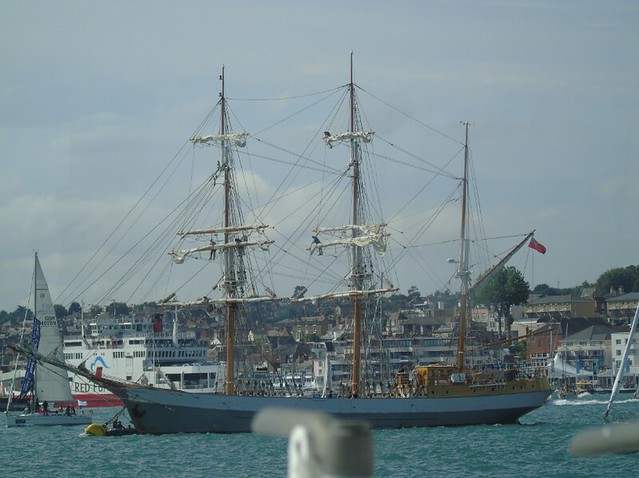
As I mentioned in my previous post, Cowes Week was in full swing on the Isle of Wight, with thousands of yachts, sailing boats and other vessels sailing around the Solent.
As we pulled in, we spotted the magnificent “Kaskelot”, built by the Royal Greenland Trading Company in 1948 as a supply ship to coastal areas of Greenland. It has the distinction of being one of the largest remaining wooden ships still sailing, and it is available for charter sailings in the UK.
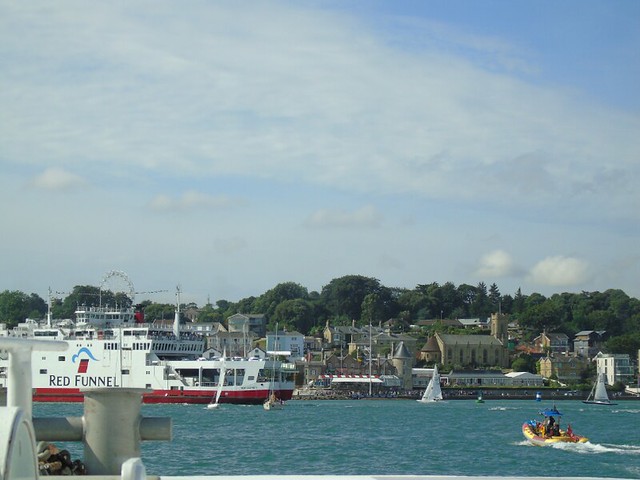
Also out on the water was the Red Funnel Vessel “Red Osprey”. We were also just arriving on a Red Funnel Vessel, however that was just a passenger ferry, with its larger counterpart being a Vehicular Ferry which docks over the river in East Cowes.
This particular ship entered service in 1994, having been delivered from the “Ferguson Shipbuilders” on the outskirts of Glasgow, Scotland. Behind it, we got our first glimpse of Cowes itself, and spotted a few famous landmarks.
Behind the ship, you can see a small building with a turreted tower at the far right hand side. This is “Cowes Castle” home to the Royal Yacht Squadron, founded in 1815 as a Gentlemans Yacht Club. The Castle itself is far older, having been built by King Henry VIII (1491 – 1547) in 1539 in case the French should try to sail up the Channel and into the Solent.
To the right of the Castle is the “Church of the Holy Trinity”, designed by Benjamin Bramble (Architect from Portsmouth) and completed in 1823. It was personally paid for by Mrs Sarah Goodwin, for the benefit of her son in law, the Reverend Maximilian Geneste.
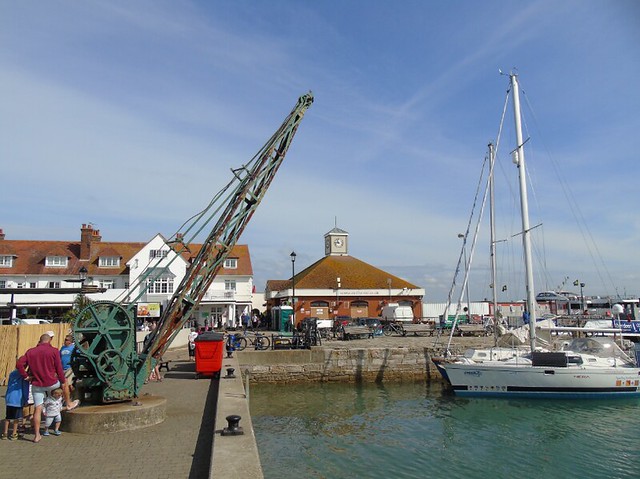
Cowes is the Isle of Wight’s foremost port, and as we exited the Red Funnel Arrivals area, we spotted various pieces of old dock side machinery lining the Quay.
The Harbour is also home to an impressive marina, as well as the Cowes Yacht Club.
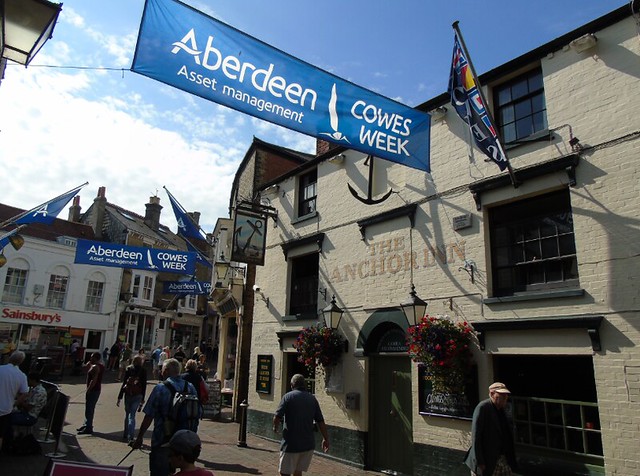
We moved away from the Harbour, onto Cowes High Street amongst the hustle and bustle of summer tourists, and locals heading to the shops.
One of the most notable buildings we saw in the area was the “Anchor Inn”, a charming early 19th Century Inn which is probably one of the oldest buildings on the street.
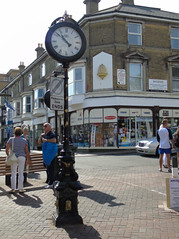
Just round the corner, where the pedestrianised High Street meets Birmingham Road, stands the Cowes Clock Tower.
The only information I have so far been able to find out about it is the name “Andy Thornton”, which is shown in the centre of the clock face, and is presumably to do with the clocks manufacturer.
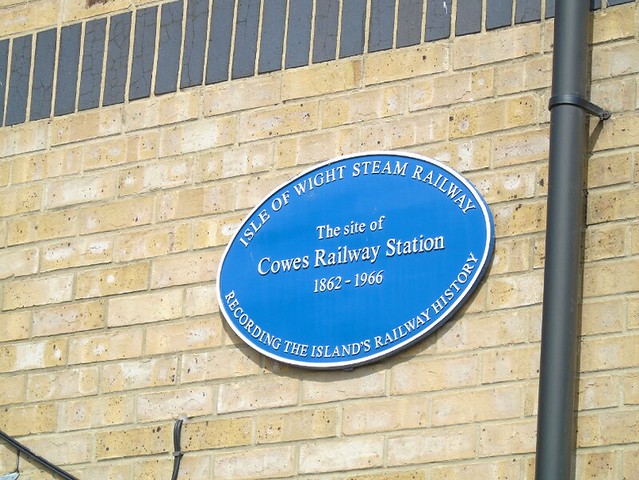
We had most of the day to chill on the Isle of Wight, so we decided to take a tour of the major towns using the local bus services. A small bus station stands outside the local M&S Foodhall, which bears a plaque on it which states:
“Isle of Wight Steam Railway. The site of Cowes Railway Station 1862 – 1966. Recording the Islands Railway History.”
The station opened in 1862, with trains originally only running to the islands largest town, Newport. From 1887 the line was extended to the seaside town of Ryde at the other end of the Island, although thanks to the rise in low cost airlines, many holidaymakers flew abroad, and the line was closed.
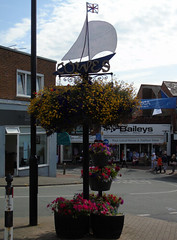
Should you be arriving in Cowes from elsewhere on the island by bus (you can get a hovercraft to Ryde from Portsmouth on the mainland) you would be greeted by a charming floral arrangement, with an appropriate metal cutout of a sailing boat atop it.
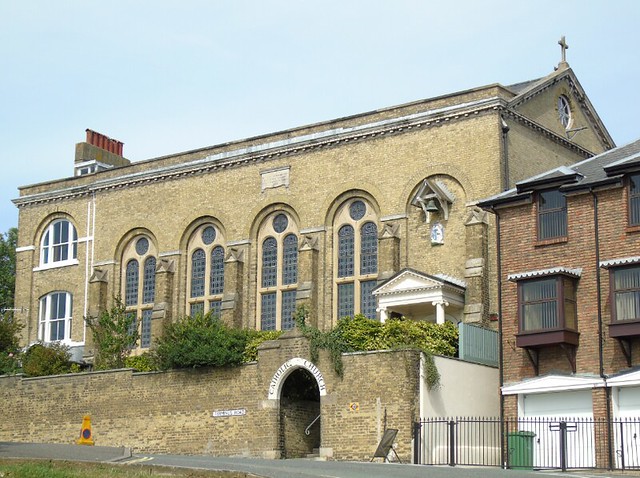
Just up the road from the bus station was our final stop in Cowes, the local Roman Catholic Church of St Thomas of Canterbury. It is one of the older buildings we saw throughout the town, having been built by Elizabeth Heneage in 1797, and designed by Reverend Thomas Gabb.
We soon boarded our bus bound for Newport, and left Cowes behind us. It is an interesting town, fitting as the gateway to the Isle of Wight. There are plenty of local landmarks, and a long expansive promenade along the sea front looking towards the mainland.
Travel wise, you can get ferries directly to Southampton, as well as buses to Newport, where you can travel on to Ryde and join the only remaining section of the Isle of Wight Railway.
On to Newport…

Cool. I saw this town on an episode of House Hunters International. Interesting place.
Awesome 🙂 Lovely place to chill by the river!